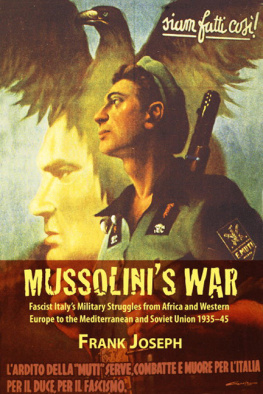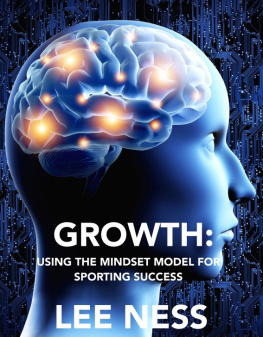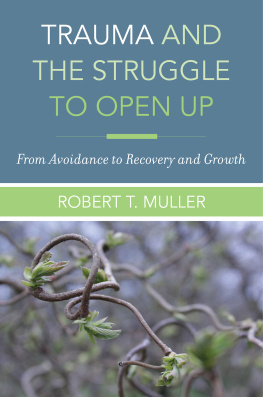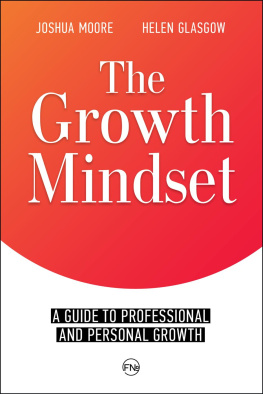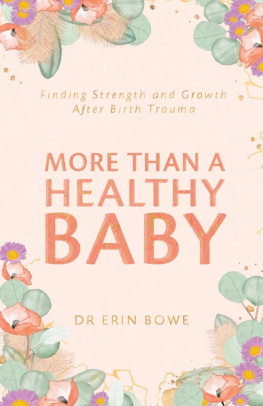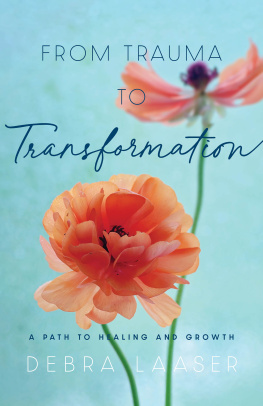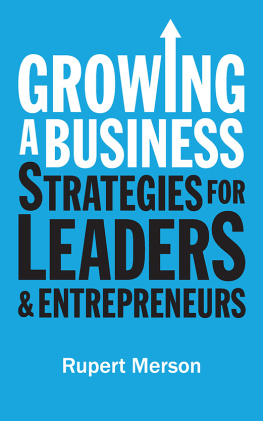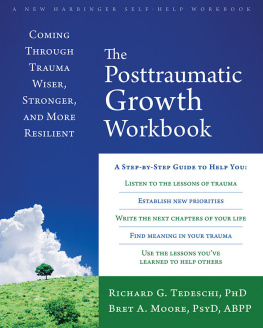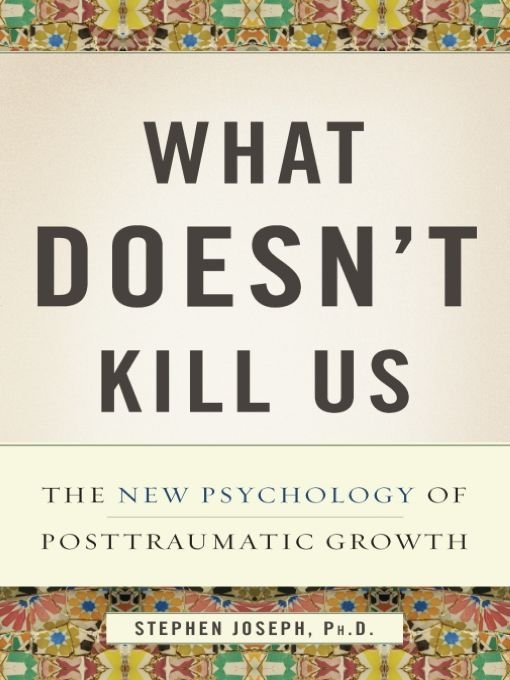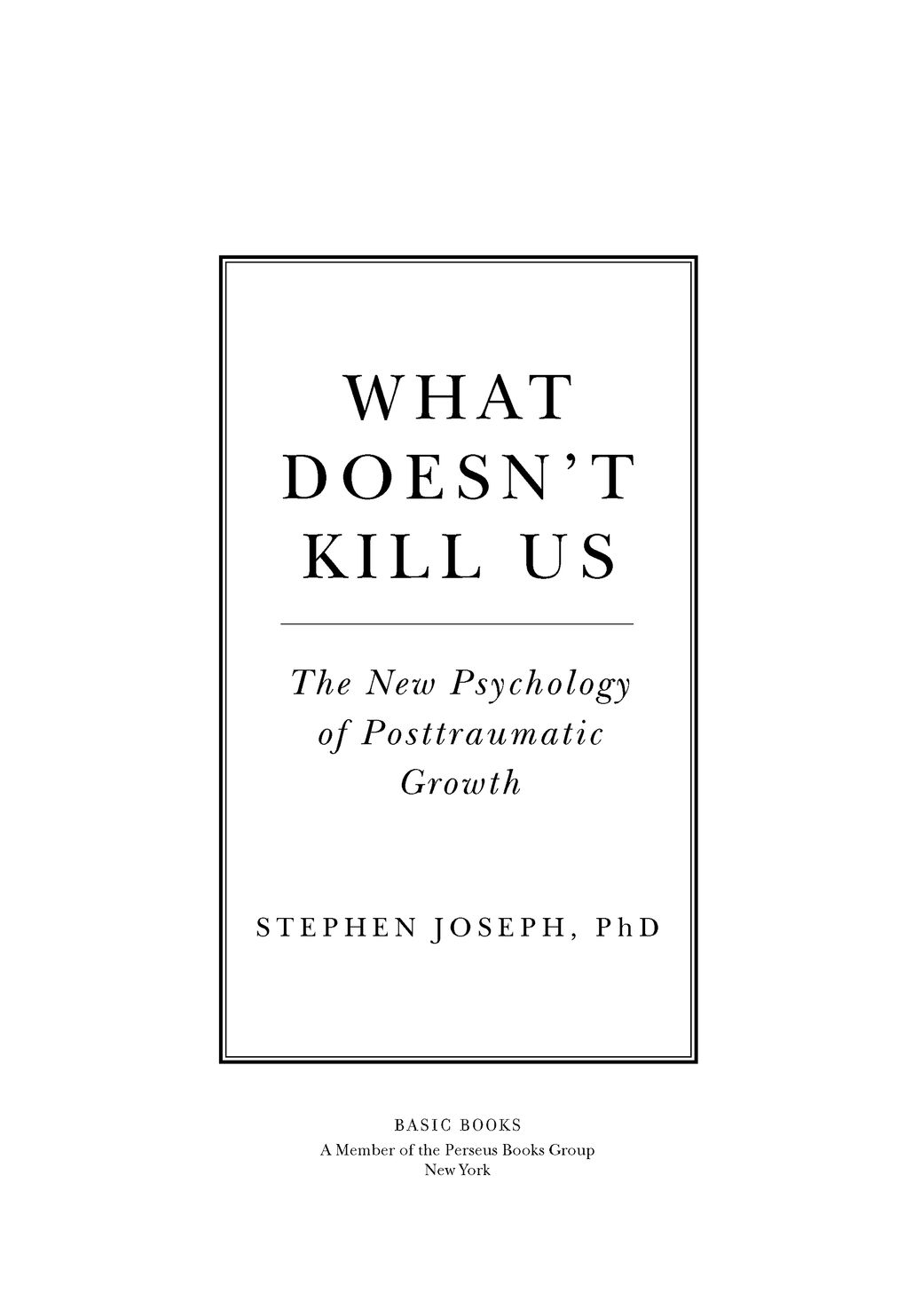Table of Contents
More Advance Praise for
What Doesnt Kill Us
In this fascinating book, Stephen Joseph maps out the rarely explored positive consequences of trauma, reminding us that growth is possible even in the most adverse circumstances. Although essential reading for clinicians working with traumatized patients, What Doesnt Kill Us is so accessibly written that it should appeal to anyone interested in the human condition.
Richard Bentall, Professor of Clinical Psychology, University of Liverpool
Beautifully written, drawing on leading-edge scientific research to reveal one of humankinds noblest qualities: the capacity to find meaning and growth in the face of near-unbearable suffering.
Mick Cooper, Professor of Counseling, University of Strathclyde
Convincingly challenging, highly enlightening, and compulsively readable, What Doesnt Kill Us is thoroughly recommended for both those who have and have not experienced trauma. A transformational new perspective.
Elaine Iljon Foreman, author ofFly Away Fear: Overcoming Your Fear of Flying
To Vanessa
NIETZSCHES DICTUM
What doesnt kill me makes me stronger.
NIETZSCHE
As a child of the 1960s and 1970s I loved American comic books. Hard as they were to get in Belfast, they were dear to me because of the superheroes they depicted: Daredevil, Batman, and the Fantastic Four. But Spiderman was my favorite of all. Physically transformed after a bite from a radioactive spider, he finds himself gifted with strange superpowers. But that is not what made him my favorite. It isnt until after his Uncle Ben dies at the hands of a criminal that Peter Parker realizes his calling in life, turning his newfound powers to fighting crime.
Peter Parkers life as Spiderman is not easy. J. Jonah Jameson, editor of the Daily Bugle, seeks to make headlines by exposing him as a criminal. His romance with Mary Jane is tortured by the stress of his secret identity.
What Spiderman had in common with the other comic book characters was that, through no fault of their own, something happened to each of them that challenged them to set a new, exciting, though difficult course in life.
As a young boy growing up in Belfast at the height of the political violence in Northern Ireland, I discovered in these stories a different world, of skyscrapers, of romance, where people with the courage to stand up for what they believe in can make a difference. I loved that tragedy could be the springboard for transformation. If only real life were like that!
As I have gotten older I realize that it is.
Stories about superheroes are metaphors for the challenges we face in life. Heroes encounter a life-changing traumatic event. They could crumple in the face of the tragedy, but instead it awakens them to new strength and wisdom. Life is forever changed: Their tragedy redefines who they are, and what they must do with their lives.
What I have learned is that these metaphors have real-life counterparts. Ordinary people have the power to live lives just as dramatic and driven as those of superheroes, overcoming traumas no less daunting. Their stories are all the more impressive for being real.
Leon Greenman was one of those people. Born into a Dutch-Jewish family in 1910 in East London, he trained as a boxer and worked as a barber, eventually specializing in the trade of antiquarian books. With his Dutch wife, Esther, Greenman was living in Rotterdam in 1938 as tensions rose across Europe. Set to return to London, he heard British Prime Minister Neville Chamberlain on the radio declaring peace for our time. He put his plans on hold, thinking there was no rush to move back to London.
The following year, war broke out; then, in 1940, Germany invaded Holland. Greenman gave his passport and life savings to a friend for safekeeping. Later, he heard that British citizens were being allowed to go home in exchange for German prisoners. So he asked his friend for the passport back. But to Greenmans horror, his friend had burnt the passport in fear of reprisals for helping Jews.
Unable to elude the Nazis, in 1942 Greenman, Esther, and their two-year-old son, Barney, were sent to Westerbork and then deported to Birkenau, otherwise known as the death camp of Auschwitz. On arrival he was separated from his wife and child. Esther held his child up for him to see and blew him a kiss. He never saw them again. As a fit young man, Greenman could work as a barber; his arm was tattooed with the number 98288 and he was sent to work in the camps.
On April 11, 1945, now at the Buchenwald camp after a sixty-mile death march, he woke up to find the camp deserted of guards. The camp had been liberated by General Pattons 3rd Army. After two more days at the hospital barracks, now free to move around the camp, he visited the ovens where so many lives had been destroyed. There were heaps of ashes and bones. He took some of the bones as tokens of remembrance and as evidence to show the world.
Unlike millions of others, Greenman had escaped the gas chambers. He returned to London and worked as a market vendor and a professional singer under the name of Leon Maure. People did not want to hear about the experiences of the camps and he did not think to tell them. Everything changed when in 1962 he witnessed a rally for the National Front, a white nationalist party that denied that the Holocaust had ever happened. It was then that he realized that it could all happen again.
For the next forty-six years, Greenman protested the rise of the Far Right and devoted himself to giving talks about what had happened. As a result he received hate mail and death threats and had to install mesh shutters on his windows at home to prevent bricks being thrown in. Despite this, he continued to give talks, take people on tours at Auschwitz, and speak out against fascism. Many schoolchildren got to hear him talk and through him learned about the horrors of the war. About his new mission, he said: My purpose nowmy dutyis to tell people what happened. In 1998 the Queen of England awarded him with the Order of the British Empire for his services against fascism. He continued his mission up until his death in 2008 at the age of ninety-seven.
Greenmans story encapsulates what this book is all about: how trauma can transform the course of ones life. Our way of seeing the world can be so completely and radically dismantled and then rebuilt that, in a sense, we step into a new world.
The idea of transformation through trauma goes against the grain of all that is written about the devastating and destructive effects of trauma. Psychological studies have shown that adverse life-events are often the trigger for depression, anxiety, or posttraumatic stress. Psychiatrists, too, recognize that life-events such as serious illness, accident or injury, bereavement, and relationship breakdown can be threatening to mental health.
What, then, are we to make of the stories of people who have encountered a life-threatening illness, a harrowing natural disaster, even a man-made horror, and then go on to tell of how it was a transformational turning point in their lives? Such stories seem to point to the truth of Nietzsches dictum: What doesnt kill me makes me stronger. But are these merely the articulations of the lucky few? Or can psychological trauma really have a silver lining for all of us? Surprisingly, the answer to this second question seems to be yes.


